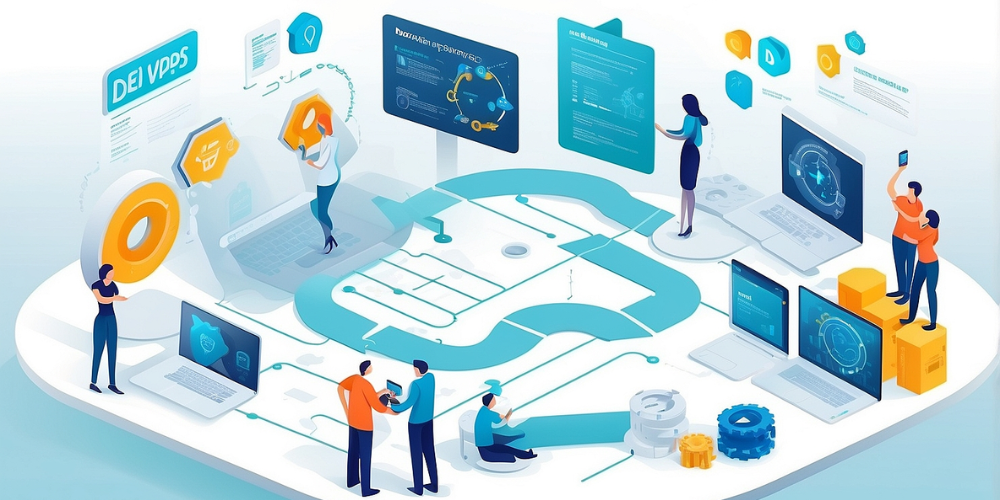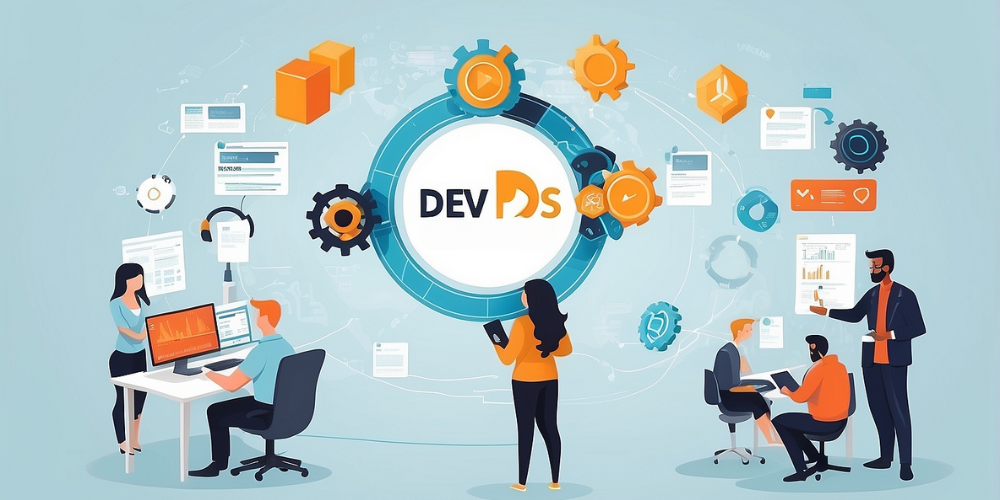Integrating DevOps into the Software Development Life Cycle
- Oct 09, 2024
- 1130

As I delve into my journey of integrating DevOps into the Software Development Life Cycle (SDLC), I’ve come to realize that DevOps is more than just a set of practices; it’s a cultural shift that emphasizes collaboration between development and operations teams. It’s about breaking down silos and fostering a proactive environment where feedback flows freely, enabling teams to deliver better software faster.
The Importance of Cultural Change
I often found that the success of DevOps integration hinges on the mindset of the entire organization. A cultural change requires buy-in at every level, from management to individual contributors. I approached this by looking at how we could enhance trust and communication across teams. By prioritizing empathy and understanding the daily challenges of different roles, I saw how we could build a more cohesive environment focused on shared goals.
Automation: The Heartbeat of DevOps
When I began incorporating DevOps principles, automation quickly became a focal point. Manual processes can slow down development, so I identified areas ripe for automation. Continuous Integration (CI) and Continuous Deployment (CD) became essential. Automating testing and deployment not only minimizes errors but also frees up time for developers to focus on more innovative tasks. That transition was eye-opening, as it laid the groundwork for rapid iteration.
Establishing Continuous Integration
Continuous Integration was one of the first practices I wanted to establish. I implemented a system where code changes are automatically tested and integrated into the shared repository multiple times a day. This approach led to fewer integration issues, as I could detect problems earlier in the process. Working in a CI environment, I became accustomed to viewing user feedback almost immediately, which continuously improved the software quality.

Enhancing Collaboration with Continuous Delivery
Building on CI, I introduced Continuous Delivery. Unlike a traditional approach where deployments could leave teams unprepared, this process ensures that the application could be reliably released at any time. This shift led to a significant change in how my team operated. With regular releases and updates, there was a tangible excitement in the air, and it was a pleasure to see how team morale soared.
Monitoring and Observability
In pursuing a full DevOps model, I understood monitoring was not just about checking system health; it was about gaining deep insights into application performance and user behaviors. By implementing robust monitoring practices, I could identify issues proactively and gather the kind of data that drove decision-making. Logs, metrics, and traces became crucial for us to spot potential pain points before they escalated into user complaints.
Feedback Loops: The Power of User Insights
Creating feedback loops was a transformative experience for my team. I began to prioritize gathering user feedback throughout development rather than waiting for post-launch evaluations. This constant loop of testing, measuring, and learning helped us refine features according to real user needs. Keeping users in mind throughout the SDLC ensured our software remained relevant and valuable to them.
Security Considerations: Integrating DevSecOps
In exploring DevOps, I realized that security couldn’t be an afterthought. Thus, I integrated security practices early in the development process, coining it as DevSecOps. This meant running security checks as part of the CI/CD pipeline and ensuring that everyone in the team understood their role in maintaining security protocols. Engaging all team members in security discussions ingrained a culture of accountability.
Reducing Technical Debt
Technical debt can slow down any development cycle. With the push towards DevOps, I focused on strategies to minimize it. By allocating time for regular refactoring and prioritizing clean code principles, we made deliberate efforts to keep the codebase healthy. This not only improved code quality but also simplified future developments, ultimately accelerating our delivery timelines.

Harnessing Cloud Technologies
The power of cloud computing played a significant role in my DevOps journey. Utilizing Infrastructure as Code (IaC) tools allowed my team to provision and manage infrastructure through code, making it easier to replicate environments. This flexibility not only made our deployments more reliable but also fostered an environment conducive to testing and experimentation.
Team Empowerment through Cross-Functionality
Implementing cross-functional teams transformed how we approached project management. Each team member brought unique perspectives and skills, enhancing our problem-solving capabilities. I promoted an environment where every voice was valued, and every opinion mattered. This increased collaboration and trust between developers, testers, and operations personnel, reducing cycle times significantly.
Embracing Agile Methodologies
DevOps seamlessly aligns with Agile principles. By adopting Agile within our DevOps framework, I witnessed a shift in our workflow and decision-making processes. Short sprints and iterative developments allowed for quick pivots based on user feedback and market changes. The resulting adaptability not only enhanced our speed to market but also ensured product relevance.
Establishing Key Performance Indicators
I found that measuring success is essential in any transition. Thus, I identified Key Performance Indicators (KPIs) for our new DevOps processes. Metrics like deployment frequency, lead time for changes, and mean time to recovery became focal points. Gaining visibility into these KPIs helped us track progress, identify potential bottlenecks, and celebrate our achievements.
Continuous Learning and Adaptation
Adopting a mindset of continuous learning was crucial. I encouraged knowledge-sharing sessions, workshops, and training programs that kept my team updated on the latest tools and practices. As technology and methodologies evolve, having a culture that embraces adaptation became our mantra. This ongoing education not only kept us competitive but also nurtured personal growth.
Realizing the Impact of Customer-Centric Development
Ultimately, I recognized that every line of code and every development effort should center around the customer. A customer-centric approach not only drives value for the end users but also informs our overall development strategy. Conducting regular user interviews and usability testing rounds fortified this connection and allowed my team to build products that resonate well with their needs.
Building a Resilient Future
As I reflect on the integration of DevOps into the SDLC, I see the ripple effects across every aspect of our processes and culture. Each step has been a building block, propelling us forward. From fostering collaboration to embracing automation, the evolution has been a journey grounded in empathy, efficiency, and continuous improvement. Through all these experiences, I formed an understanding that DevOps is not merely a methodology but a transformative approach that can shape the future of software development into something agile, resilient, and responsive to user needs.